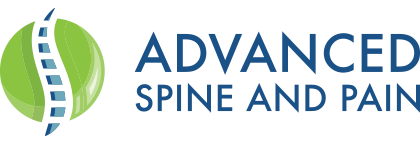Manipulation Under Anesthesia (MUA)
Download the MUA brochure
Manipulation under anesthesia (MUA) is a non-invasive technique that uses stretching and mobilization to break up scar tissue that has formed in the muscles, near the joint capsule, or around the nerve root. This is done while the patient is sedated to facilitate increased movement.
Candidates for MUA are often those with persistent pain and limited mobility despite using several conservative treatments.
Call us today at (480) 573-0130 or contact us online to learn if manipulation under anesthesia is right for you.
Candidates for Manipulation Under Anesthesia
- Disc bulge herniation
- Facetogenic pain
- Failed back surgery
- Adhesive capsulitis
- Chronic recurrent sprain/strain
- Myofascial pain syndrome
- Loss of joint range of motion
- Soft tissue contractures
- Neuromechanical dysfunction
- Cervical brachial pain syndrome
- Chronic cervicogenic headaches
On the other hand, patients with the following conditions should not undergo MUA:
- Osteoporosis
- Bone fractures
- Staph or strep infection
- Uncontrolled diabetes
- Uncontrolled hypertension
The MUA Procedure: Before, During, and After
Before MUA
Before scheduling an MUA, the patient will undergo an evaluation to determine suitability. In addition to a history and physical and neurological exam, other tests may be ordered, such as blood work, MRI or CT, ultrasound, and/or nerve conduction velocity.
Other vital factors to be assessed are the patient’s response to standard conservative care, activities of daily living and their current limitations, and risk of possible deterioration following the MUA.
During MUA
Anesthesia: An IV is placed and sedation is provided. Standard monitors are attached before beginning sedation. Supplemental oxygen will also be used during the procedure.
Manipulation: Once sedated, the patient is taken through passive spinal, hip, shoulder, and/or paraspinal ranges of motion determined by the performing physician. Usually, low-intensity stretching is sufficient to break up scar tissue, although more advanced applications may occasionally be necessary. Joint restriction is reduced as the scar tissue breaks down, leading to an increased range of motion. The procedure may be repeated the following day as necessary and repeated on subsequent days as needed.
Monitoring: Throughout the procedure, the anesthesiologist and other providers closely monitor vital signs, such as heart rate, blood pressure, and oxygen saturation.
Recovery: After MUA, the patient will go to the recovery room and be monitored until full recovery from anesthesia has occurred. The patient will be discharged to home or physical therapy as pre-determined by the patient and physician.
After MUA
It is normal to experience swelling, soreness, or mild bruising around the manipulated area for a few days. Your physician will provide specific instructions for post-operative care, which may include the following:
- Ice packs for swelling reduction
- Pain medication (e.g. anti-inflammatory medications)
- Range of motion exercises

Recovery Time after Manipulation Under Anesthesia
Immediately following the procedure, patients may experience an immediate increase in mobility and some soreness. Rehabilitation should start as soon as possible with a program tailored to the individual. Depending on the patient, this may include heating and massage, ultrasound therapy, and various physical therapy exercises to stimulate and improve motion.
As mentioned above, the MUA procedure may be repeated in the following days. Post-MUA care is essential for the effects to manifest. The idea is that increasing movement incrementally each day leads to better results.
After the final MUA procedure, the rehabilitation may last another three to six weeks. Many patients experience significant improvement in their pain and mobility after completing rehab.
Exploring the Pros and Cons of Manipulation Under Anesthesia

Pros
- Increased range of motion: MUA can break up adhesions and scar tissue that restrict mobility.
- Reduced pain and discomfort: By addressing the underlying cause of pain, MUA can enhance the effectiveness of pain medications and physical therapy.
- Potential to avoid or delay more invasive surgical procedures: MUA can be a less risky and more cost-effective solution with shortened recovery time versus surgery.
Cons
- Anesthesia risks: As with any anesthesia procedure, the risks are adverse reactions, respiratory complications, and postoperative nausea and vomiting.
- Injury risk: While small, there is a risk of injury to the joints, ligaments, or muscles.
- Potential for temporarily increased pain: There may be a temporary increase in pain, but this is usually self-limiting.
Frequently Asked Questions about Manipulation Under Anesthesia
Here are the answers to common questions patients have about MUA:
Is manipulation under anesthesia painful?
As described above, there may be increased pain immediately following the procedure, but this usually resolves after a few days.
How long does it take to recover from manipulation under anesthesia?
Recovery from the procedure will take a few days to weeks.
How many MUA procedures will I need?
MUA has achieved the desired outcome on an average of 2-4 treatments.
Is manipulation under anesthesia considered surgery?
This is not a surgical procedure. No invasion or needle is used in this treatment.
Is MUA Right for You?
When considering MUA, the patient and physician must discuss the possible risks and benefits. It should be remembered that MUA is typically advised when all other conservative treatments have failed.
Realistic goals should also be addressed and modified depending on the individual’s health and response.
Manipulation under anesthesia offers valuable results in the management of certain musculoskeletal conditions. Call us at (480) 573-0130 or contact us online to discuss the MUA procedure.

